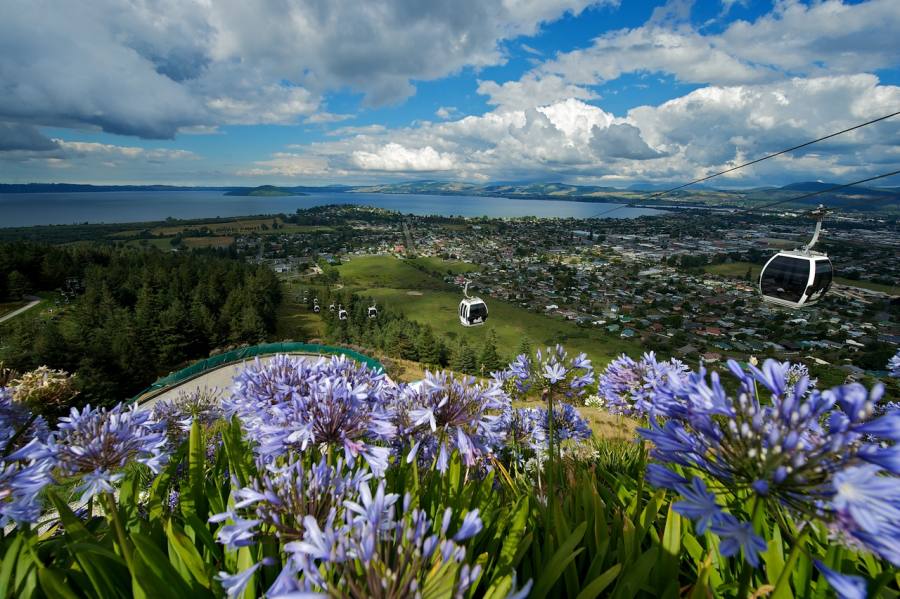As is clearly evident, Tourism in New Zealand is hurting and the Bay of Plenty is no exception. As Tourism Bay of Plenty chief executive Kristin Dunne notes, many tourism businesses are small or solo enterprises operating on very small margins.
In 2014 visitor spend in the Coastal Bay of Plenty was $706 million, and to the year-ending January 2020, it reached $1.121 billion.
“The last six years of progress could be lost without strategic direction and considered action,” Dunne told Bay of Plenty Business News.
“We also cannot return to tourism’s operating system as it was. Our world will be forever changed because of the astounding impact COVID-19 has had on the world. As a part of this change, tourism must also be looked at differently.”
Michelle Templer, chief executive of Destination Rotorua told Bay of Plenty Business News that the health and safety of locals and visitors remained the number one priority.
“We are continuing to take the advice of the Ministry of Health and Tourism New Zealand, and keep our local industry informed about their recommendations,” she said.
Kiwis still provide the bulk of spend
The Stats NZ Tourism Satellite Account, issued in December last year, showed that while annual expenditure from international tourism was $17.2 billion last year, $23.7 billion came from domestic travellers.
Tourism Industry Aotearoa chief executive Chris Roberts said New Zealanders’ tourism spend was different to that of many overseas visitors, but Kiwis were the backbone of the industry. And it is clear that in a world where international travel may have changed, perhaps for years, that domestic tourism will become an increasing push.
Nationally, the tourism industry is trying to understand the direct and wider implications of the Novel Coronavirus, but is too early to know the full impact, said Dunne.
But Tourism Bay of Plenty acknowledges that data gathering is a “significant challenge within the New Zealand tourism sector”.
As a collective, the industry is working hard to establish measures beyond visitor spend, said Dunne. Currently, however, visitor spend remains the most accurate and reliable source of information. Consequently, tourism projections are visitor spend based rather than visitor number based.
Targets prepared for Tourism Bay of Plenty’s 10-year Visitor Economy Strategy 2018-2028 estimated annual domestic visitor spend growth of 3.7 percent and annual international visitor spend growth of 5.3 percent for the next decade.
These were predicted with the vulnerability of travel demand to global and national events in mind, says Tourism Bay of Plenty, which as of writing was optimistic they were still achievable.
Tourism Bay of Plenty said it was working closely with the Tauranga Chamber of Commerce and Priority One to address the needs of the affected businesses across the Coastal Bay of Plenty and has staff calling tourism operators to undertake business health checks daily.
“The main priority is ensuring that tourism businesses in the Coastal Bay of Plenty make the most of the Government’s support package to try and help them get through and support their families.”
New strategy road map to reset recovery
Dunne referenced Tourism Bay of Plenty’s new 30-year strategy, Te Hā Tapoi | The Love of Tourism 2019-2022 – launched just before COVID-19 hit really hard – set out a vision for a new kind of tourism. It was lauded by renowned tourism thought leader Anna Pollock as “groundbreaking in that it recognises the critical importance of focusing on delivering net benefits from tourism (i.e. mitigating the costs) and more actively engaging hosts and host communities in stewarding the natural and cultural resources on which tourism depends” .
Dunne said the strategy was already forging a healthier, more collaborative, more resilient, regenerative operating model for tourism in the Coastal Bay of Plenty before COVID-19 and will be the Coastal Bay of Plenty’s roadmap to reset the tourism economy as we begin to recover.
At the moment, Tourism authorities are still getting to grips with the depth of the problem. One positive for the Coastal Bay of Plenty is that China is by no means the biggest source of tourists, though it is a more significant factor in Rotorua.
In the year ending November 2019, Chinese visitors spent $12 million in the Coastal Bay of Plenty, with $10 million of this being spent in Tauranga. Total international visitor spend in Coastal Bay of Plenty for the same period was $248 million.
China is not a major visitor market for the Coastal Bay of Plenty, with Chinese visitor spend comprising five per cent of international visitor spend, or one percent of total visitor spend. For comparison, the biggest international market in the Coastal Bay of Plenty is Australia, which brought in $71 million to the local economy in the YE November 2019.
To stimulate travel demand for the Coastal Bay of Plenty, Tourism Bay of Plenty plans to redirect some of its marketing efforts to Australia and domestic markets.
However, Destination Rotorua’s Templer noted that China had always been an important international visitor market for Rotorua and remained a key part of its long term visitor strategy. China is the fourth highest source of international visitors to Rotorua, with Chinese tourists last year contributing nearly $40 million to the Rotorua economy.
“The initial New Zealand travel ban and the added extension will have significant impact on businesses focused on providing experiences to the Chinese market and we’re encouraging the industry to keep us up to date so that we can shape our destination response,” said Templer.




